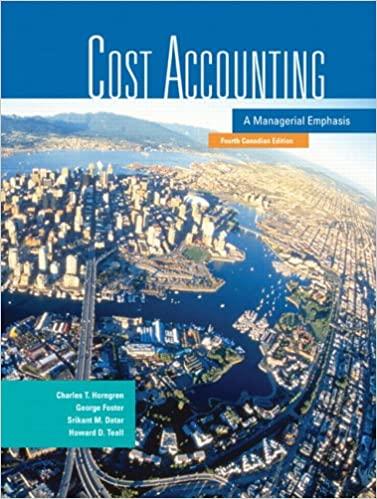Downward demand spiral and profitability assessment. Iotera, Inc., manufactures compact portable storage solutions for the portable personal
Question:
Downward demand spiral and profitability assessment. Iotera, Inc., manufactures compact portable storage solutions for the portable personal computer market. Iotera’s products are very popular and have attracted an almost cult-like following, especially among laptop warriors and PDA (personal digital assistant) junkies. Iotera’s chief competitor, $ybest, is based in
$ilicon Valley. Iotera is currently engaged in a vicious price war with $ybest. Unfortunately, Iotera must also contend with rapidly dropping prices for high-tech consumer products.
Iotera, Inc., manufactures three products—Duda, a 1 Gb 3.5” floppy system; Rock, a 5 Gb cartridge-based system; and Funky, a 1 Tb cutting-edge optical mini-disk system. Once the darling of Wall $treet, bad times have come to Iotera. Management is now questioning the profitability of each product and would like to discontinue any product whose gross profit margin percentage is less than 10 percent.
Iotera’s current cost accounting system is rather simplistic. The single overhead allocation base is direct labour-hours. The allocation rate per hour is calculated by summing variable and fixed overhead costs and dividing by the number of direct labour-hours. Product cost is calcu¬
lated by multiplying the number of direct labour-hours required to manufacture the product by the overhead rate and adding this amount to the direct labour and direct materials costs.
Budgeted cost data for 2007 for Iotera appear on the next page.
Required 1. What is the overhead allocation rate per labour-hour? Will Iotera discontinue any product?
Iotera would redirect all available capacity freed up from dropping a product to the most profitable product in total dollar terms that is retained. Complete the budgeted cost data table to answer this question.
Consider the products Iotera will produce after any decisions in requirement 1. It now considers average selling prices for 2007 as follows: Duda, $52.20; Rock, $262.80; and Funky, $468.00. Compute the profitability of each product using the new selling prices;
will Iotera discontinue any product?
Consider what products Iotera will produce after any decisions in requirements 1 and 2.
Assume that anything produced can be sold, and that total overhead is unchanged at
$5,191,690. Due to packaging and warehouse constraints, Iotera’s capacity is limited to the production of 200,000 units in 2007 (each product produced constitutes a single unit, regardless of product type).
Recalculate costs and gross margins under this scenario.
b. Will Iotera consider dropping any additional products?
c. How has the overhead allocation rate changed?
d. What has happened to the profit margins on the remaining products, and how has this affected Iotera’s total gross profits?
4. What recommendations would you make to management regarding the current product¬
costing system and product decision policies?
Budgeted Cost Data for lotera, Inc., in 2007 Total overhead costs $5,191,690 Total labour-hours 60,089 Allocation rate per labour-hour Duda Rock Funky lotera, Inc.
Product characteristics Direct labour-hours per 10 units 1 ? 10 Total units produced 123,190 72,600 ? ?
Total labour-hours spent p ? 4,210 60,089 Product costs Direct materials per unit $19.44 $107.76 $221.52 Direct labour per unit @21.60 per hour ? ? ?
Allocated overhead per unit ? p ?
Total product costs ? ? ?
Average selling price $47.76 $190.80 $384.00 Gross margin per unit p ? ?
Total revenues ? ? ? ?
Total costs ? f ? ?
Operating income ? ? ? ?
Step by Step Answer:

Cost Accounting A Managerial Emphasis
ISBN: 9780131971905
4th Canadian Edition
Authors: Charles T. Horngren, George Foster, Srikant M. Datar, Howard D. Teall





